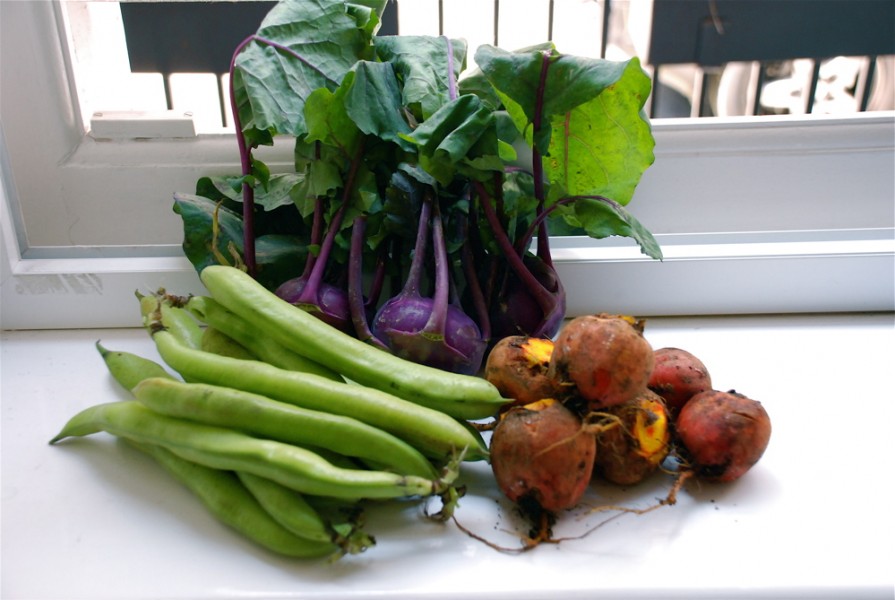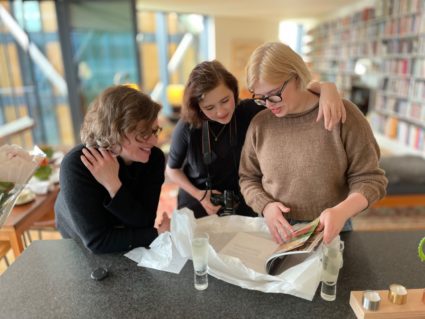it’s all about alkaline, did you know?

Say you’re a person with a sometimes iffy, not to say dodgy digestion. I have myself a little history with digestive things run amok, a condition that first visited me when I owned an art gallery in New York City. For a time, the technical term for my condition was “Galleryitis.” It went briefly underground when I closed the gallery and gave up on my illustrious career as an entrepreneur. Ha!
My delicate stomach returned to bite me, however, when last summer the craziness of the move to London caught up with me. And then I recovered nicely. But it’s definitely a thing that comes and goes, and I spend a lot of money on little tablets called Rennie, which get me by from day to day as I rebelliously eat everything under the sun instead of “white foods” which are meant to be less challenging. “White foods”? Mashed potatoes, perhaps, yes. Lemon sole, definitely. But all the time? I don’t think so.
But then it was suggested to me that the solution to all my problems was to adjust the PH balance in my diet. As in, ingest far less acid and far more alkaline. That made sense, a bit. What doesn’t make sense, entirely, is figuring out what’s what. I have been doing a bit of research on this, and sadly, some of the obvious ones are true: orange juice is a big, enormous no-no. And considering that I get fully 25% of my calories per day on a huge glass of fresh-squeezed orange juice every morning, that’s not a welcome fact. But get this: lemon juice is alkaline. Who would have guessed it? I’ve replaced my orange juice with something rather less racy but still nice called “lemon water,” which is a lot of lemon juice squeezed into a glass and then it’s filled with water. Tepid water, mind you, because cold things shock the digestion. So they say. This notion coincides nicely with the stubborn British refusal to provide adequate quantities of ice in drinks (it’s the only flaw in anything British, as far as I can see, and perhaps grew out of wartime rationing, that’s what I’m going to think).
So I have come up with some lists of things to eat to compensate for the things that are bad. You cannot imagine the number of websites devoted to this issue, and some very very interesting indeed. Guess what? Scotch and vodka are the virtual kiss of death. Maybe not even virtual. So to make up for my cocktail, I must have… a cucumber. Why not? Maybe that’s why Nobu serves a vodka martini with cucumber slices floating in it.
I am pleased to see that I am encouraged to avoid winter squash, but dismayed to see that all dairy and all meat are bad, bad, bad. For protein I can have an… almond. Or tempeh. What’s that? I have no idea, but I must make a mental note that it should be the fermented variety, should I come across any.
I’m not going to go crazy on this, believe me. But I have had several very stomach-happy days in a row by giving up (sob) my OJ and substituting lemon water. Fair enough. But then I think, I really want some Moroccan meatballs. Hence, the glorious profusion of alkalising vegetables to have on the side. I adore kohlrabi and so does John, so why not dip some in hummous before dinner? Oh, bl**dy h***, chick peas and olive oil are acidising. Well, then, just plain kohlrabi. And some new variety “stripey beets” sound good, with a little drizzle of balsamic vinegar. Don’t even tell me. Yep, ingesting vinegar is like ripping out your entire digestive system and putting it under a broiler. Well, plain beets, then.
Enough of this nonsense. What else is going on? We’re beginning to make our Connecticut plans for the summer, which is exciting. I can hardly remember a year ago when we really didn’t feel as if life could be lived in two places at once, but we proved that you can go home again, and then you can… go home again! It is wonderful have to have school year in London and then return to cosy little Red Gate Farm in July and know that the lambs and goats and neighbors and dart board and pond and chicken house are all still there.
Then, too, we’re trying to get more exercise, so today we walked from Marble Arch to Notting Hill, to look at “our” house. Yes, we may have found a place to live, after all these long months of searching. It’s just this side of affordable, which means it’s frighteningly expensive. But it’s on a rather sad, tired block of houses that seem to call out after one, “Take care of me, please…” The bulk of the houses are still flats, but there are a few who’ve taken the plunge and returned to single-family use. “Ours” doesn’t seem ever to have been flats, but then, too, it has been virtually ignored by the family for perhaps 60 years, so it’s full of lovely period details, and also not so lovely period decline. But it would be our chance to restore a piece of history, I feel, and yet not completely break the bank. Watch this space. This week will be crucial in the Handling My Husband area. I have to judge very precisely how excited to get: if I get too rambunctious, he will feel he needs to throw a bit of cold water on me. If I’m too dismissive, he’ll take it as license to keep on house-hunting FOREVER. So I have to alternate between cautious optimism and skeptical pessimism. It’s a tightrope, but I haven’t been married for nearly 20 years for nothing. I can do this.
Oh, and I tested another recipe for my re-issue of the 1940s Gladys Taber cookbook project. I am going to give it to you here, not because it is gourmet food, but because it epitomises what Gladys was all about: simplicity, economy and ready availability. There are some things I’d change. For example, I’d chop the pepper instead of slicing it. And I did add some grated cheddar cheese between the beef layers, and on the top, and I’d add more. But it reminds me of something my mother might have made (under duress as with all food preparation; she’d much rather be refinishing a Hoosier cupboard, or embroidering a sampler, or indeed sticking hot needles in her eyeballs if it comes to that). It’s named Stillmeadow after Gladys’s house, across the road from our very own in Connecticut. I’ve retained her minimalistic recipe style, with a couple of additions in brackets from me. Give it a try, why not?
Stillmeadow Special Hamburger
(serves four generously)
Take ground beef or hamburger [about a pound and a half] and pat half of it into a round cake tin. Spread it well with prepared mustard, salt and pepper, and lay thin slices of onion over it. Then lay slices of tomato over that, and slices of sweet green pepper. Put another layer of meat on top for a lid, with a slice of tomato on the top.
Bake in a moderate oven (350 degrees) until the meat is thoroughly done [45 minutes]. This is an easy and wonderfully good dish. The onion and tomato cook into the meat and the juice that comes out is rich and brown. Be sure to use a deep cake pan.


